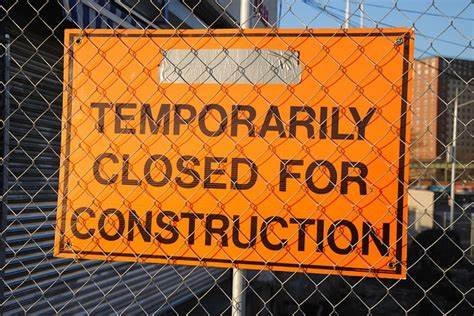Safety is a top priority in civil engineering, where workers face a wide range of hazards and risks. Ensuring safety throughout the life of a construction project—from planning to completion—not only protects the workforce but also guarantees the structural integrity and long-term success of the project. Civil engineering projects often involve heavy machinery, complex processes, and large-scale operations, making safety protocols essential to prevent accidents and injuries.
1. The Risk Factors in Civil Engineering
Civil engineering projects are inherently dangerous due to various risk factors, including:
- Heavy Equipment: Cranes, bulldozers, and excavators can cause serious accidents if not operated properly.
- Working at Heights: Construction sites often involve scaffolding, ladders, and elevated work platforms, increasing the risk of falls.
- Confined Spaces: Working in tight spaces like tunnels or trenches poses a risk of suffocation, collapse, or entrapment.
- Hazardous Materials: The use of chemicals, concrete, and other substances can be dangerous if not handled correctly.
- Electrical Hazards: Power lines and wiring can present risks of electrocution or fires if not properly maintained.
Proper safety measures help mitigate these risks and ensure a safer working environment for all personnel involved.
2. Key Safety Practices in Civil Engineering Projects
Safety Planning and Risk Assessment
Before any construction project begins, a thorough risk assessment is essential. This process involves identifying potential hazards and creating detailed safety plans to address them. Risk assessments help engineers and safety officers to design safety measures, such as proper signage, protective barriers, and emergency procedures.
Worker Training and Certification
One of the most important aspects of safety in civil engineering is ensuring that workers are properly trained and certified. Workers should be trained in:
- Proper Equipment Use: To safely operate machinery, tools, and safety gear.
- Hazard Recognition: To identify potential risks and avoid dangerous situations.
- First Aid: To provide immediate medical care in case of injury.
- Personal Protective Equipment (PPE): Workers should be equipped with safety gear such as hard hats, gloves, safety glasses, and harnesses to protect against common hazards.
Regular safety drills and refresher courses ensure that all workers are prepared for emergencies.
Use of Technology and Innovation
Modern technology plays a key role in improving safety on civil engineering projects. Innovations such as:
- Drones: Used to monitor hard-to-reach areas and assess potential hazards without putting workers at risk.
- Wearable Safety Devices: Devices that monitor workers’ health and well-being in real-time, detecting potential signs of distress or dangerous conditions.
- Building Information Modeling (BIM): Helps create accurate 3D models of construction projects, allowing for better planning and risk management.
These technologies enhance safety measures by providing real-time data and improving communication between teams.
3. Regulations and Safety Standards
Civil engineering projects must comply with safety regulations set by national and international authorities. These standards outline mandatory safety procedures and practices to ensure a high level of protection for workers. Key regulations include:
- OSHA (Occupational Safety and Health Administration): Sets and enforces safety standards for the construction industry in the United States.
- ISO 45001: An international standard for occupational health and safety management systems.
- Local Building Codes: These codes ensure that construction practices meet safety, health, and environmental standards specific to each region or country.
Compliance with these standards is not only a legal obligation but also a critical step in reducing risks and improving overall safety on construction sites.
4. The Role of Safety Culture in Civil Engineering
Fostering a safety-conscious culture within the workplace is essential for long-term success. A safety culture means that safety is ingrained in every aspect of the project, from top management to on-site workers. This culture emphasizes:
- Open Communication: Encouraging workers to report hazards, near-misses, and unsafe practices without fear of reprisal.
- Accountability: Ensuring that every team member takes responsibility for their own safety and the safety of others.
- Continuous Improvement: Regularly reviewing and improving safety practices, taking lessons from past incidents, and adapting to new risks or technology.
Leaders in civil engineering projects should lead by example, demonstrating a commitment to safety that is reflected in all stages of the project.

5. Emergency Response and First Aid
Even with the best safety practices, accidents can still occur. Having an effective emergency response plan is crucial for minimizing injury and damage. Key components of emergency planning include:
- Clear Emergency Protocols: Workers should know exactly what to do in case of an accident, such as how to evacuate the site or administer first aid.
- On-Site Medical Support: Having first-aid kits, defibrillators, and medical personnel available to provide immediate care.
- Post-Incident Review: After an accident, it is important to conduct a review to understand the causes and prevent similar incidents in the future.
6. The Benefits of Prioritizing Safety
Investing in safety practices not only protects workers but also leads to numerous long-term benefits for the project and the company, including:
- Reduced Costs: Fewer accidents mean fewer insurance claims, legal fees, and work stoppages.
- Increased Productivity: A safe work environment boosts morale and reduces downtime, leading to higher efficiency.
- Improved Reputation: Companies that prioritize safety are viewed more favorably by clients, partners, and the public.
Conclusion
Safety is a critical component of every civil engineering project. From the planning phase to construction and beyond, ensuring that workers are protected is essential for the well-being of individuals and the success of the project. By embracing safety regulations, implementing modern technologies, and fostering a culture of safety, civil engineers can significantly reduce risks and improve outcomes. Prioritizing safety not only protects people but also enhances project efficiency, quality, and sustainability.




